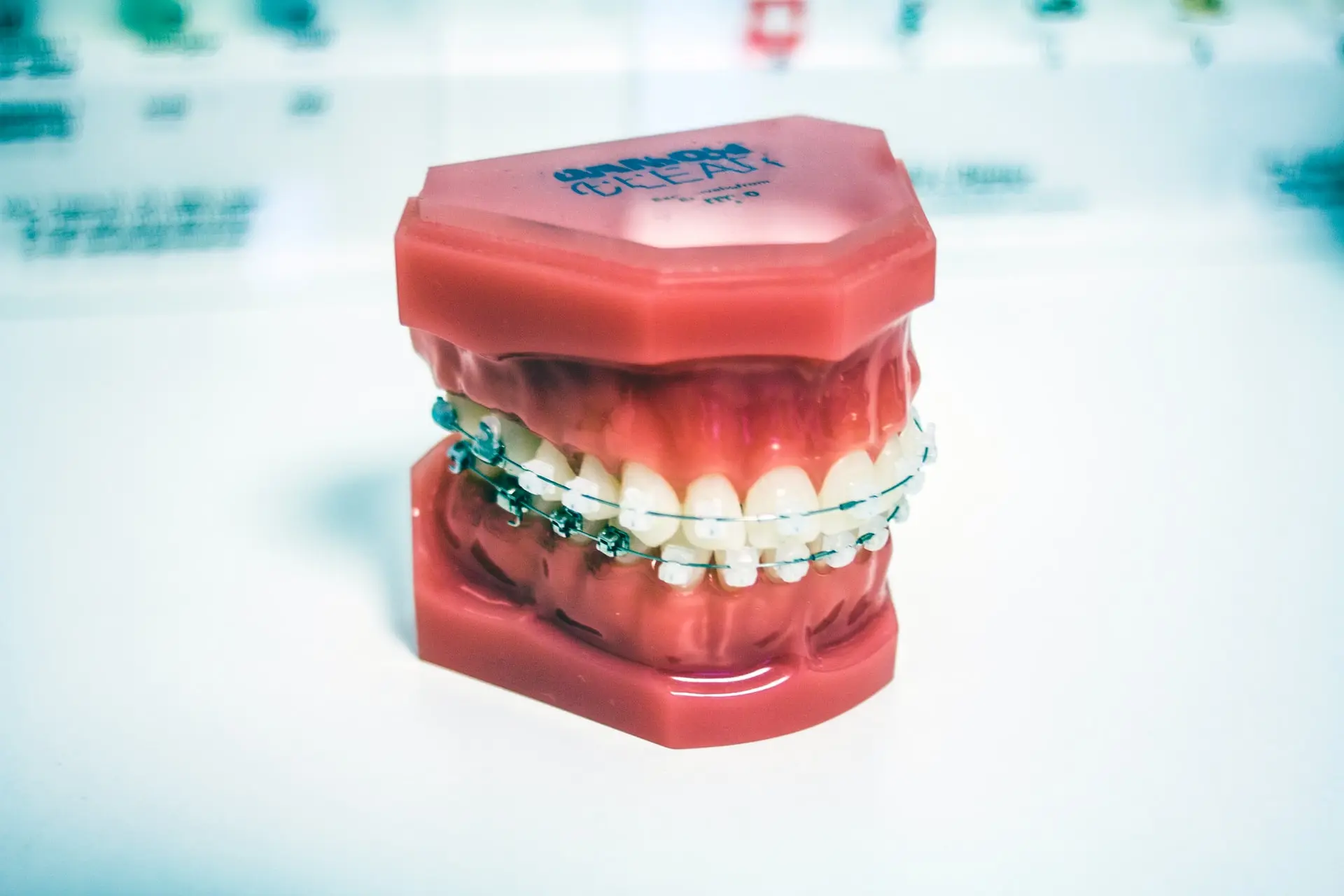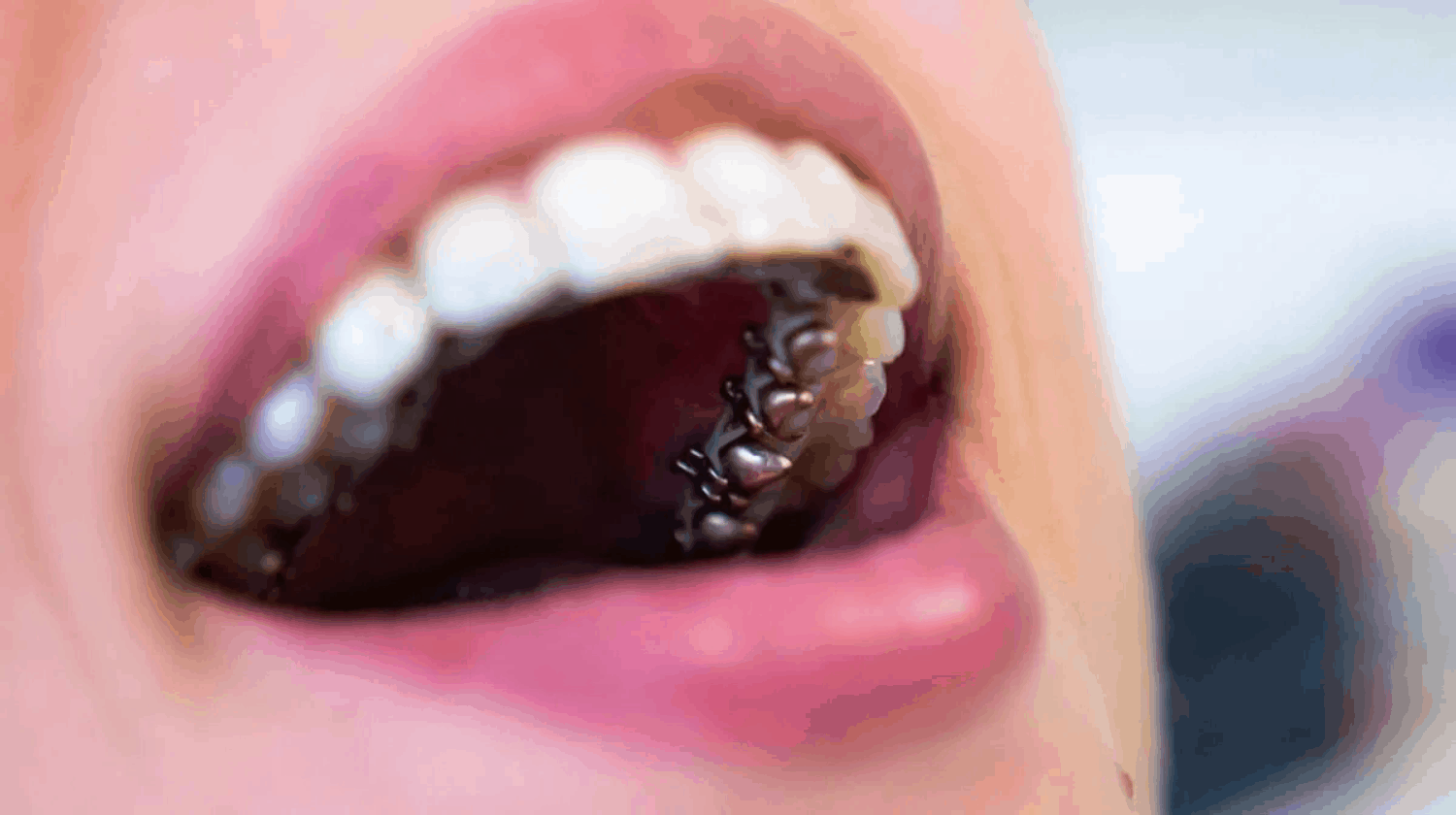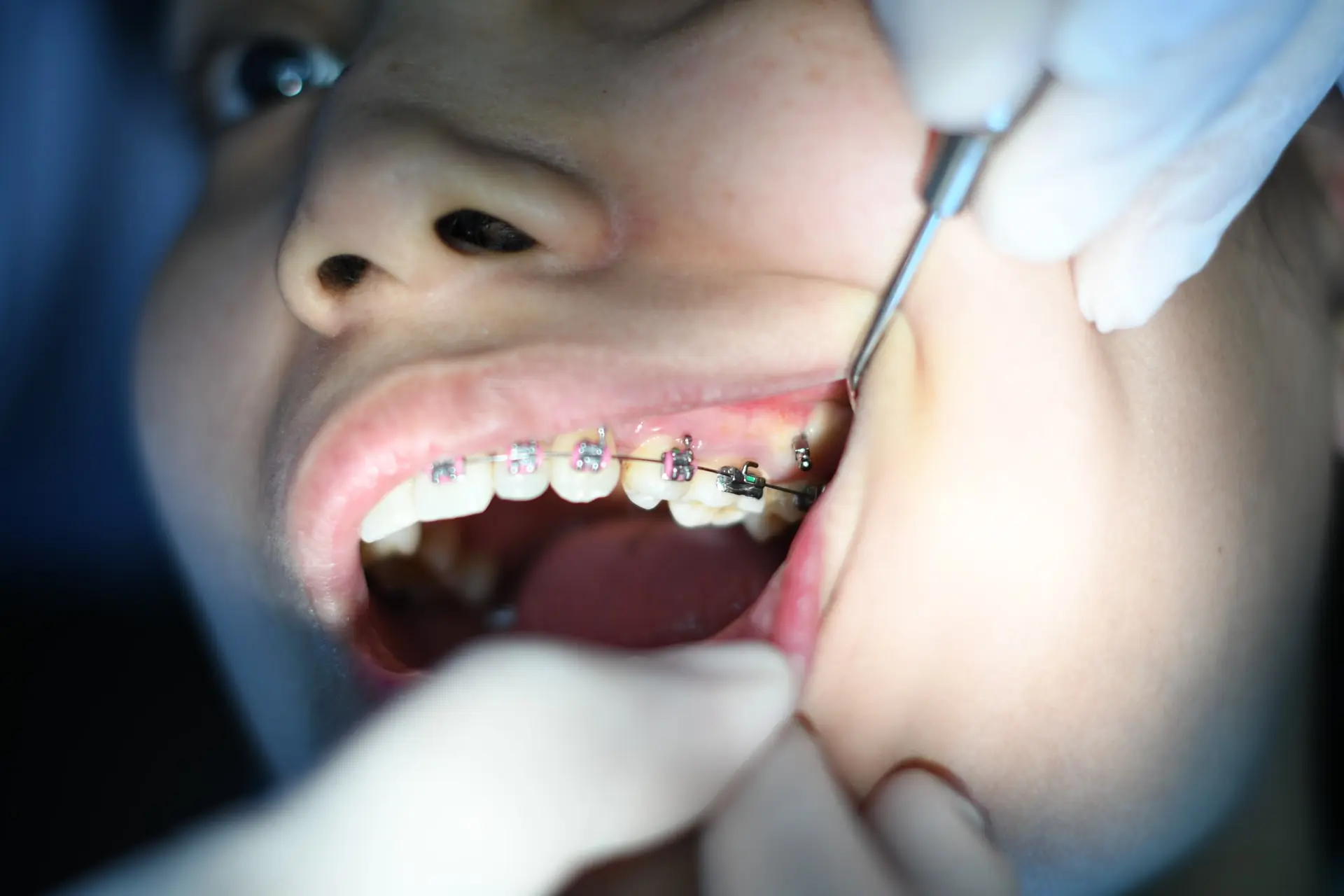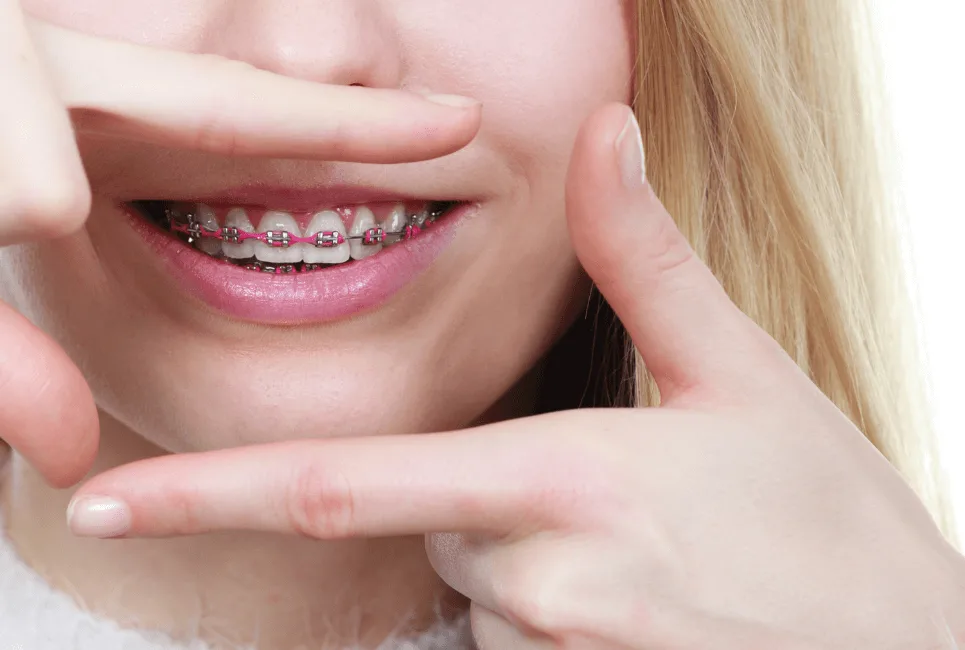- The Oral B 3000 vs 5000: Which Electric Toothbrush Is Better? - February 27, 2022
- Kid Tested and Dentist Approved: The Five Best Natural Toothpaste for Kids - February 17, 2022
- Need Orthodontic Treatment, But Not a Fan of Braces? The Five Best Braces Alternatives Available - February 7, 2022
Guide to Finding the Best Aligners and Braces
If you want to learn about braces (and let’s be honest here — the chances are high, if you’re reading this), look no further. Braces are those dental devices designed to help properly align your teeth, and orthodontists are those talented and specialized doctors in charge of correcting people’s bites and malocclusion (misaligned teeth).
Everything you could, should, and may want to know about braces can be found here. Read on to learn the important stuff on braces, and then some.
Here is a breakdown of where to find what you’re looking for:
- History of braces
- Who needs braces
- Common types of malocclusion-correction devices
- What to expect while having braces
- How to finance braces
- Frequently asked questions (FAQs)
A Brief History of Braces:
It’s a given and universal truth: dental health is incredibly important. Primarily, having healthy gums and teeth seems to be the general main concern and focus surrounding dental health.
For thousands of years humans have practiced dental health learning and practices, and tooth alignment goes back quite a way back, though not as extensively far back.
The Etruscan people were well known for their significant dental health advancements as a culture. One such discovery regarding their history involves mummies being found with bands around their teeth.
The banded teeth on the mummies were more evident in a passing ritual to retain their teeth through into the afterlife. Still, not too far down the line, Greek philosophers Hippocrates and Aristotle were said to debate the best way to address a crooked tooth. Some ancient Romans were found to have a wire fashioned over their teeth.

Though there are records of ancient orthodontic treatment, modern orthodontics has only really evolved in the last few centuries. In 1728, french dentist Pierre Faucard suggested a horse-shaped bandeau (a band) device to expand the arch or the mouth.
In 1819, the first wire crib (like a wire cage surrounding teeth) was introduced. Not much later, Eugene Solomon Talbot, a dentist, proposed using x-rays for orthodontic purposes for the first time.
In 1858, Norman W. Kingsley was the first person to write an orthodontic article. In 1880, J. N. Farrar proposed the application of mild force at scheduled time intervals (much how we tighten braces today).
Edward H. Angle created a system for classifying malocclusion, started the first orthodontic school in the United States, and established the American Society of Orthodontia.
Lastly, the last century has brought great advancements and brought us the modern orthodontic appliances we know today. In the 1970s, advancements in dental adhesives allowed for the brackets we have today, versus the cage like cribs that were common before.
Stainless steel helped make braces much more affordable. Lingual braces (which we cover further down) were invented, allowing for a cleaner look.
Lastly, it wasn’t until the turning close of the millennia that prompted the invention of clear dental aligners. A long history has come before you, and as such, there is a lot to know about braces and aligners.
Who needs braces?
An important note to make, as obvious as it may seem, is whether or not you even need orthodontic treatment to begin with. Braces and aligners correct any malocclusions which might impair the jaw’s performance in biting and chewing. Sometimes, though, one might just want braces for cosmetic reasons such as small gaps, or slightly uneven teeth.
Kids and adolescents come to mind with braces, but close to only an estimated 35 percent of adults have a proper bite. So then, when are braces necessary? If you experience these specific phenomena (listed below), then it is worth considering a visit to your dentist or orthodontist for advice.
Crowding
Crowding is the most commonly treated condition in orthodontic care. Crowding is simply when your mouth does not have enough space to accommodate all of your teeth.
It can cause discomfort, lead to crooked teeth, and obstruct proper cleaning, which can lead to early decay or overall poor oral hygiene.
Gaps
Gaps between teeth, as mentioned earlier, are usually a cosmetic issue. However, it can also lead to your teeth shifting to fill the vacated spot, which may lead to tooth loss or discomfort later on.
Your dentist or orthodontist can help you better determine how, or if, the gap affects your bite and if you’re a candidate for treatment.
Overbites/Underbites
An overbite exists when the top or upper front row of teeth protrude the bottom front row of teeth. Conversely, an underbite exists when the upper front row of teeth rest behind the lower front row of teeth.
Both conditions make for an uncomfortable bite and unpleasant chewing. Even more concerning, there is an increased risk for fractures from trauma, as well as an increased risk for gum impairments later on.
Improper Bite from Tooth Alignment
While the other three common issues are the most prevalent signs requiring further consultation from a dentist, any improper bite warrants a check up with your dentist or orthodontist.
If your teeth do not align or touch when you close down and clamp your mouth, there can be numerous reasons why, and the best help you can receive will come from your dental care practitioner.

Types of braces
You may already be certain you need braces, but now you may be wondering, “What are my treatment options?” If so, pat yourself on the back for being inquisitive — and please continue reading as we explore and compare the following types of common braces:
- Traditional braces
- Ceramic braces
- Lingual braces
- Damon braces
- Clear aligners
Traditional Braces
Traditional braces are the type of braces that typically come to mind when you think of braces. There are technical descriptions as to how traditional braces work but simply put, they are typically relatively square, cubic metal brackets affixed to the teeth with a powerful type of glue.
Then there is an archwire which connects the brackets together. Ligature elastics (little rubber “O” rings) hold the archwire to the brackets. These are what determine the “color” of the braces.
The braces work by applying pressure and encouraging the teeth to adapt to a certain way. The wire does most of the work. Because it wants to return to its original shape, it brings the teeth along its returning journey to straightness.
Your gums loosen up over time (but not noticeably!), adapting to the shift accordingly. This eventually results in a great change in your tooth organization and alignment over time.
Pros
- Most cost-effective option
- Multiple colors, if personalization appeals
Cons
- The most noticeable of all the other options on this list
- May read as “immature” on adults
Ceramic Braces
Not everyone likes the idea of having braces on their teeth. To help offset the flashiness that’s commonly found in traditional dental braces, ceramic braces another option available to dental patients.
Ceramic braces are tooth-colored ceramic bracket braces, rather than the traditional metal brackets. However, this subtly does come at a higher cost.
These braces work the same way as traditional metal braces, but they are instead intended to reduce the appearance of braces. The wires can be tooth colored, as well.
Though because they are made of ceramic material, they are more likely to break than a metal bracket. The ceramic brackets also tend to be bigger than their metal counterparts.
These are ideal for adults who have their adult teeth, don’t want the flare of braces, and are more careful than younger children or adolescents. Another interesting thing to consider is that being ceramic, machines like MRIs are not as affected by their presence.
Pros
- Tooth-colored, less flashy
- Less interference with imaging technology
Cons
- More expensive than traditional braces (by about $1,000-$2,000)
- Slightly harder to clean
- Higher risk of breaking
Lingual Braces
Lingual braces are incredibly similar to traditional braces with one major distinction: where they are placed. Traditional braces are placed in the outer facing direction of your teeth (where people can see them), whereas lingual braces are located in the inner-facing, or lingual area (hidden from view).
Placing them facing inwards virtually completely eliminates the sight of braces, but it does come with its own unique issues.

Lingual braces are stealthy, but may cause discomfort to the tongue, and potentially give you a lisp for a period of time as you adapt to wearing them.
Being inside the tongue area, they can also be difficult to clean. Unfortunately, also, they can be much more expensive than traditional braces. Lastly, lingual braces may not be an option for everyone, as they have slightly more limited situations where they are a viable treatment.
Pros
- Virtually invisible appearance of braces
- Can help treat a variety of malocclusions
Cons
- Irritation, discomfort, or lisp
- Higher pricing point
- Difficult to clean
- Not everyone will meet the criteria for lingual braces
Damon Braces
Damon braces were mentioned earlier, in the history portion, as one of the notable innovations of the last century. Damon braces are well known and revered for their self-ligating ability (which means they stay close by themselves).
Where conventional braces use ligature elastics (those colorful “O” rings), Damon braces have their slots arranged in such a way that the brackets allow for the wire to slide gently as it moves the teeth around, while still being attached to the wire securely.
The effect of this technology is some slightly reduced visibility of the braces by avoiding the need for brightly-colored bands. The major effect these braces have, though, is their greatly improved pain and procedure-time reduction.
By allowing the teeth to move freely, there is less pressure on the tooth itself, and more in the direction of tooth guidance. And by not being as firm and tight, the even gradual pressure allows the teeth to move quicker than their banded relatives.
Though they are more expensive than traditional braces, they are easier to clean, which is always important for overall dental health.
Pros
- Less painful
- Around 7 months quicker than traditional braces
- Easier to clean
- Slightly reduced appearance
Cons
- Braces still pretty visible
- Can cost a few thousand dollars more than traditional braces
Clear Aligners
Clear aligners have only been around since the latter end of the 1990s, but they have had a huge impact on how people treat their teeth today. Clear aligners are more akin to mouth guards in appearance than they are to braces.
These pieces of durable, flexible plastic are applied every two weeks on average (and depending on the company). The main benefit to clear aligners is that they are incredibly difficult to spot and they overall eliminate completely the sight of braces.
With clear aligners, you can usually expect to eat whatever you want (more on that ahead), as well as drink whatever you want. The downsides to clear plastic aligners is that they tend to be rather expensive, and significantly so.
The other downside to clear aligners is that they are typically reserved for older adolescents and adults. Lastly, these plastic aligners are not for everyone and are very limited to much simpler orthodontic procedures.
Pros
- Completely avoid the need for braces
- You can eat and drink what you want
Cons
- Very expensive
- Need to be of a certain age (typically a late teen or adult)
- Narrower list of candidates than braces
Check out more reviews of popular clear aligner brands here:
What to expect with braces
Having braces means having an intrusive complex new set of hardware in your mouth, on top of having all your teeth (with the exception of clear aligners).
As such, there is a significant change immediately in how your mouth will operate. Change does not cease there, however. Typically there are new lifestyle changes to get used to, as well.
Before Braces
Before getting braces, you will meet up with your orthodontist and determine which procedure is best for you and how it will work. The dentist or orthodontist will go over any extractions that may be needed prior to any orthodontic devices being applied to your teeth.
They will typically also obtain a plaster molding of your bite. Before the actual application, they will give you a cleaning so as to apply the braces on a clean surface.
This is the ideal time to take pictures of your smile. While you may feel reluctant before taking pictures of your teeth in the days leading up to your treatment, it can help give you perspective to look back upon and see the subtle changes at work.
Make sure to be brushing and flossing as best as possible daily — it’s essential to keep up with generally good dental health and prevention.
During Braces
It is important that you go over how to properly maintain your oral health during the time that you will have braces. Any information provided regarding removing or adding hardware (such as rubber bands, or applying wax) should be listened to closely, as it will benefit you greatly in both the short and long run.
It’s also important to take the time to learn more about what your diet will look like. Many people find that their mouth is initially sore after having braces applied (which can fade over time).
If you find your mouth is sore while you adapt to wearing braces, softer foods and liquids (such as soups) will become your best friends.
When things settle in, making sure not to eat foods harmful or adverse to your braces’ performance is incredibly important. Generally, extra cheesy foods, crunchy foods, foods with small crumbles, or tough meats will be better to avoid for the sake of easy cleaning.

Knowing what to do in case something breaks is also important. Ask the dentist or orthodontist what to do in the case that something were to break, should the event ever happen.
If you are an athletic person, making sure to be wearing the proper protective equipment (such as a dental guard) suggested by your dental practitioner will be in your greatest benefit. Being prepared and promptly acting is the best way to get through braces.
Lastly, making sure to wear your retainer after your braces are off is also integral to the future of your orthodontic procedure’s longevity and to help keep your smile looking even and straight.
Check out how popular aligners compare:
How to finance your braces
Braces cost Americans an average of around 5,000 dollars, presuming the exemption of not having dental insurance. Braces can range, however, anywhere from 3,000-10,000 dollars.
With all these expensive figures, it is not unlikely to view the challenge of paying for a chance at having a proper bite as just a little daunting of a venture. Luckily, there is a wide variety of options available to you.
Dental Insurance
This is the best option for most people, as some insurances offer orthodontic benefits (which could work in your favor to reduce close to half the price you would need to pay for braces).
Depending on your dental insurance policy’s maximums, and the overall pricing of your procedure, you may not wind up spending too much money. The only unfortunate downside to this option is that not every dental insurance offers orthodontic coverage.
Flexible Spending Accounts (FSAs)
If your employer has this benefit available to you, you may just be able to channel the maximum allowable amount into your FSA. The money from these accounts are used for out of pocket payments, and could potentially cover a large portion of the overall cost from braces.
Health Savings Account
If you have a high-deductible health insurance plan, you may be eligible to create a health savings plan and deposit up to 7,100 dollars in tax-deductible contributions. This money can then be used to pay for dental procedures, such as braces.
Bank Loan
You can apply for bank loans or use a credit card to pay for braces. Depending on the length and conditions set by your bank, you could span the payments out far, or short with variable interest.
Discount/Dental Programs
Depending on the orthodontist, there may be a discount applied if the amount is paid in full, all at once. Another way to obtain a discount is to simply visit dental schools and take advantage of their reduced rates.
By supporting a dental program, you can help allow the students to learn how to perform these procedures, while also getting significantly more affordable quality dental care.
Payment Plan
With certain situations, certain orthodontists may allow you to select a purchase plan. These are ideal if you do not have dental insurance but do need braces. The plans typically feature little or no interest for close to two years. Some interest may apply if payments are made late.
Frequently Asked Questions
Unfortunately, there are little to no alternatives to braces, though there are different types of braces and alignment options depending on your unique circumstance. One can choose from traditional braces to various less-noticeable options. Veneers are also an option, as a purely cosmetic solution, but may need replacing, and do not correct bite or malocclusions.
The decision to go through orthodontic procedures such as braces is an entirely personal and subjective choice, but braces can still be quite effective in adults. Adults also consist for about 20% of all braces patients, making one out of every five braces patients an adult. It may be worth your while to consider braces to correct any structural problems that may be occurring.
It is possible to have a successful orthodontic treatment if some teeth are missing, depending on your unique situation. Treatment can close a gap, or can save sufficient space to allow for a replacement tooth. Ultimately, your dentist or orthodontist will know what is best for you.
On average, people will receive treatment in the form of braces for 1-3 years, but ultimately it depends on each unique situation. Moreover, cooperating with the orthodontist, and maintaining good general dental hygiene will also help keep things running smoothly.
The ads you’re seeing are likely ads for a service called “veneers.” Veneers cover teeth and mask the problems commonly found with malocclusion and improper tooth structure. While providing a quicker cover for your teeth, veneers do not correct how the upper and lower teeth meet. Veneers can also lead to plaque buildup between the tooth and veneer, leading to the quicker formation of cavities.
With so many varieties of treatment options available to you, it can be easy to become overwhelmed as to which type of treatment is best for you. Your orthodontist can discuss your unique case and help you determine which type of braces (whether you require traditional braces, lingual braces, or can use clear aligners), and can help you get your desired results.
Conclusion
Hopefully, this guide has allowed you to both educate and inform yourself on the various types of circumstances, devices, and financing available surrounding orthodontic treatment.
If you find yourself in a dental situation that requires orthodontic treatment, it’s best to talk to your dentist or orthodontist about what your options are. If you do determine that you need orthodontic treatment, consider which type suits your desires and budget best.
Lastly, by using the information from the article, you can determine the best way to pay for the braces. Keep up your maintenance oral care, and you will have many years of beautiful smiles — and proper biting! — ahead of you!
Read More:

